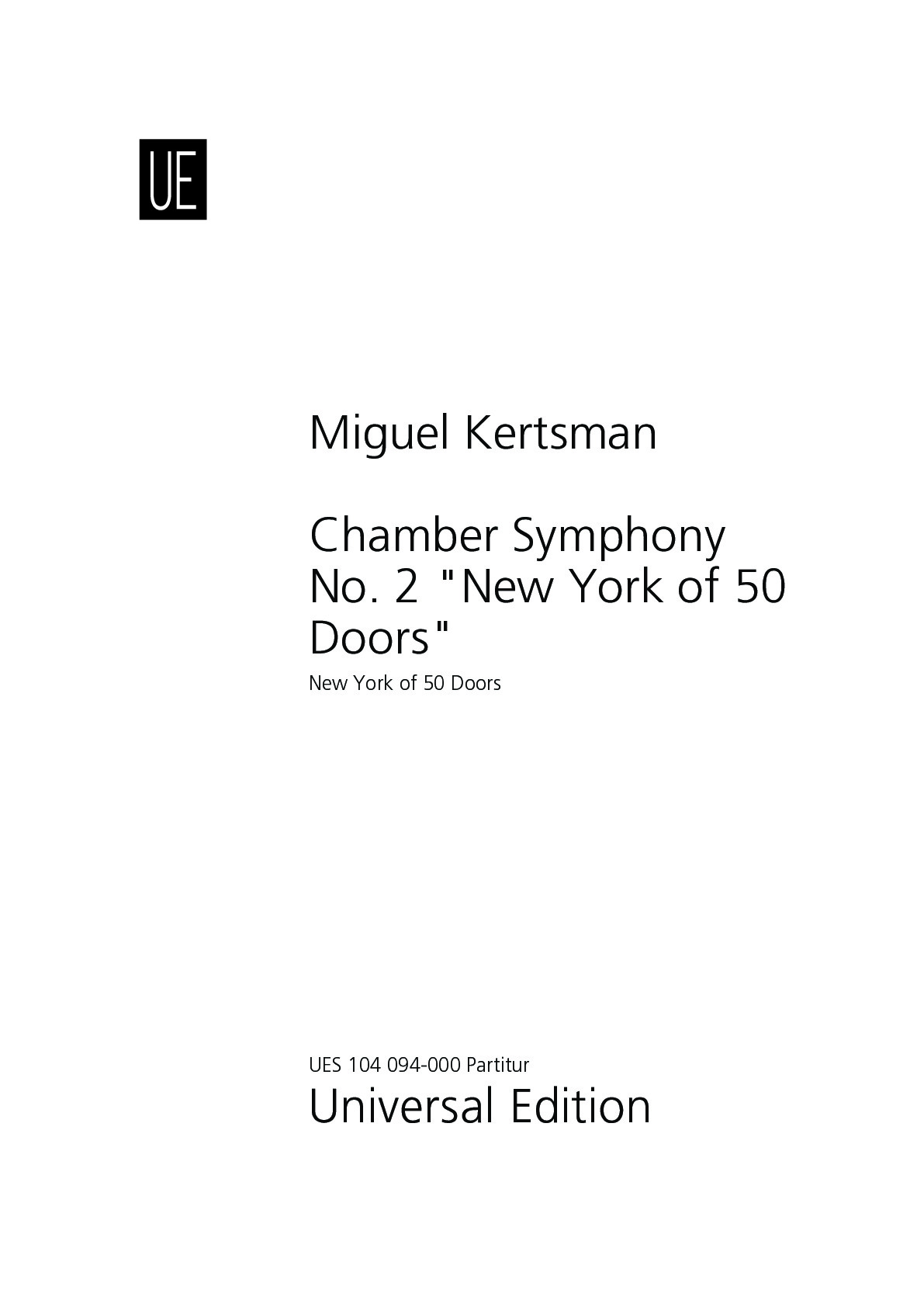.png)
Digital edition
immediately available as PDF
€36.95
Payments:
Shipping:
Miguel Kertsman
Kammersymphonie nr. 2 "New York of 50 Doors"
UES104094-000
Type: Dirigierpartitur
Format: 210 x 297 mm
Pages: 60
Digital edition
immediately available as PDF
€36.95
Payments:
Shipping:
Audio preview
Description
Chamber Symphony No. 2 “New York of 50 Doors” presents a vivid and colourful portrait of the city that never sleeps. The Chamber Orchestra of the Vienna Symphony Orchestra (and its conductor, Gergely Sugar) commissioned the work in 2014 and premiered it in 2015 at Vienna’s Konzerthaus. Because they requested a “jazzy piece,” Kertsman repurposed two main themes and the episodic modulations, representing different sounds and cultures present in NYC, from an earlier Jazz Ensemble work, New York of 50 Doors. And because the orchestra would be performing John Adams’ Chamber Symphony on the same concert, they asked him to use the same orchestration: four woodwind players (flute doubling piccolo, oboe, clarinet doubling bass clarinet, bassoon doubling contrabassoon), three brass players (French horn, trumpet and trombone), synthesizer, percussion (greatly expanded in Kertsman’s work) and solo strings.
The synthesizer (which stands in for a lead synth sound, a Hammond B3 organ and a clavinet) takes the lead in introducing the main motif – a descending 4-note chromatic phrase followed by a flurry of semiquavers that leads to some impressive virtuosity from trumpet and French horn later in the piece. Some form or other of this idea permeates much of the musical discourse, as does a feeling of jazz, most especially in the sophisticated rhythms of the percussion section in counterpoint with the bass, cello and others. The piece evokes a city with an incredibly rich cultural diversity that is busy and complex, active and focused:
Quoting MusicWeb International “Its frequently louche and jazzy loneliness might almost be the soundtrack to Edward Hopper’s painting Nighthawks.”
Also notable throughout is the unusual interplay of instrumental colours, starting at the beginning with piccolo and contrabassoon. Kertsman makes every tonal strand stand out in the texture. Doubling is rare; nothing is wasted.
Text by Frank K. DeWald for Naxos Records (publicly available) and Amazonica Music, New York
More information
Type: Dirigierpartitur
Format: 210 x 297 mm
Pages: 60

